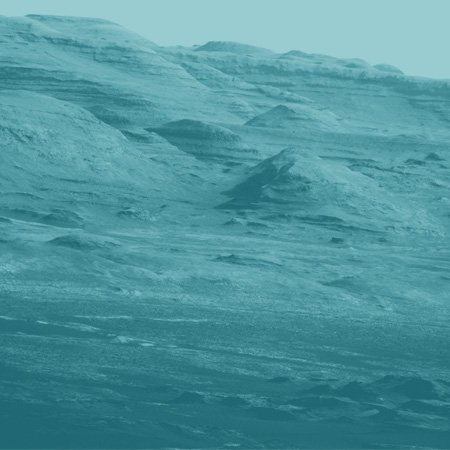John Grotzinger, Caltech's Fletcher Jones Professor of Geology, is the project scientist for JPL's newest Mars rover—Curiosity, the Mars Science Laboratory. The rover is exploring the floor of Gale Crater, and Grotzinger will describe its discoveries so far during a free public lecture at 8 p.m. on Wednesday, April 24, in Caltech's Beckman Auditorium.
Q: What do you do?
A: I oversee the science team and the way that it interfaces with the engineering team. I started back in 2007 when all the instruments on the rover were still in development. We had to test them all individually and then test how they performed with the rover. There were reviews every step of the way as the instruments were completed and certified for flight. This was a totally different experience for me; getting involved with the mission in the very early stages of development and seeing what goes into the whole process has been the most intense learning experience of my career. I went from having a few graduate students and postdocs to suddenly trying to lead a group of 400 scientists and engineers.
After we launched, the science team spent the next eight months practicing how to use the instruments, and now I'm basically helping work out the path of discovery. We work as a group to figure out what we're going to do with the rover each day. There are probably a dozen meetings in a typical day, of which I attend four to six. For me, the highlight of each day is the science discussion, where we have a two-hour block of time in which different team members present all the science data that we've got, and we just talk about it. It's a lot of fun.
Q: Aside from the fact that you're driving around on Mars, which is just inherently cool, what's the best thing about what you do?
A: Nobody ever before has seen what we're seeing. Every day new data arrive. New images of the terrain we're in the course of discovering; new measurements from the analytical instruments. (Mars is behind the sun right now, so we aren't getting any new data, but we should regain contact around the first of May.) The downlink's timing is based on the sol—the Martian day, which is 39 minutes longer than an Earth day—so some days we wake up and the data have arrived hours earlier. Other times, when the data come down later in the day, all the team members who are physically at JPL gather in one or two rooms where the downlink is actually happening. Those hours, days, are really an amazing experience because we really are going where nobody has gone before. And that's pretty special.
Q: How did you get into this line of work?
A: In 2003, I got involved with the Mars Exploration Rovers as one of the long-term planning leads. I was at MIT at the time, but I came out to JPL for a year to do that. Two years later, I joined Caltech's geobiology group. What we do on Mars is pretty much what I do on Earth with my students—investigate rocks that are billions of years old and look for evidence of habitable environments. I went to college to be a biologist. I changed majors to chemistry and then finally went into geology.
Geology represents this great nexus of physics and chemistry and biology and math. You get to do it all at the same time, and if you do field geology you get to do it outdoors.
Named for the late Caltech professor Earnest C. Watson, who founded the series in 1922, the Watson Lectures present Caltech and JPL researchers describing their work to the public. Many past Watson Lectures are available online at Caltech's iTunes U site.
 Credit: JPL
Credit: JPL

